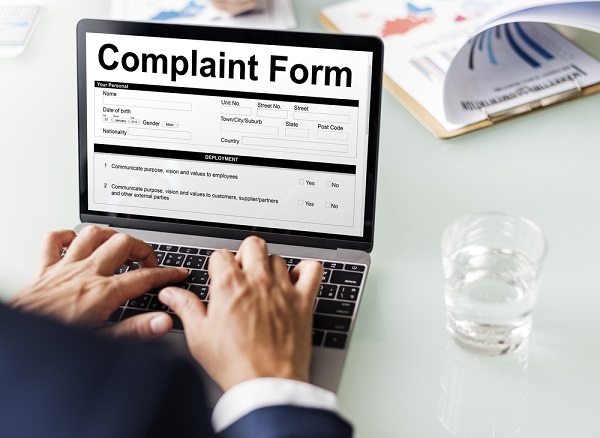The top shortcomings of life and health insurers in the eyes of state regulators are slow claims handling, non-compliant underwriting practices and failure to provide required compliant disclosures, according to Wolters Kluwer's 2016 Top 10 Market Conduct Actions for Life and Health Insurers.
For the 13th year, the Minneapolis-based governance, risk and compliance division of the global consulting firm reviewed state insurance regulators' market conduct actions of U.S. insurers published in 2016, and found that violations of claims and underwriting regulatory requirements continue to dominate the annual findings.
“Insurance professionals have to manage a variety of internal and external factors when processing claims, including claimant communications and mandatory disclosures, and these areas continue to pose a challenge for insurers,” says Kathy Donovan, senior compliance counsel for Wolters Kluwer's insurance compliance business. “Conducting focused, targeted internal audits in these problem areas can provide insurers an avenue for better monitoring the effectiveness of their regulatory practices, and thereby help foster more consistent compliance results.”
In our slideshow, Donovan provides additional commentary on the 2016 Top 10 Market Conduct Actions for Life and Health Insurers:

No. 10: Failure to pay claims properly in accordance with policy provisions and requirements.
Insurance claims are submitted by consumers with their expectation that these will be paid under the policy, Donovan says.
“Whether through inadvertent claims processing errors or systemic non-payment of covered benefits, regulatory examiners often determine that improper amounts were paid,” she says.
No. 9: Failure to adhere to replacement requirements.
Established minimum standards of conduct provide the regulatory framework for the replacement of existing life insurance and annuities, Donovan says.
“Specific timeframes and mandated disclosures are intended to protect the consumer in these financial transactions,” she says.
No. 8: Noncompliant claim denial notices.
“Not only do denial notices need to be communicated to the claimant, but these notices are also generally required to detail the specific reasons for the full or partial denial, including for each reason the factual and legal basis known at that time by the insurer for denying the claim,” Donovan says.
No. 7: Failure to use licensed and/or appointed producers, provide proper notification of producer appointments or terminations, and maintain appropriate documentation.
“Regulatory examiners frequently review companies' producer registers for accuracy and completeness of the documentation, with specific attention to company appointments, licensing and termination notices of the producers,” Donovan says.

No. 6: Failure to respond to regulatory requests for information.
It is not uncommon for insurance regulatory agencies to request information from insurers, Donovan says.
“Generally, there are timeframes applicable to such requests, and examiners would consider an insurer's failure to meet those deadlines and/or providing incomplete responses to be acts of noncompliance,” she says.

No. 5: Failure to adhere to required claims grievance and appeal processes, including timeframes and disclosures.
Very specific requirements govern these claims processes, Donovan says.
“From failure to timely provide written acknowledgment of a grievance to failure — to process as a complaint an enrollee's expression of dissatisfaction about customer service or the quality or availability of a health service — it is critical that insurers implement robust procedures to be compliant,” she says.
No. 4: Incomplete/improper documentation of underwriting and claim files.
“Recordkeeping and documentation are critical to an insurer's ability to provide an audit trail not only for regulatory examiners, but also for internal compliance audit staff,” Donovan says.
No. 3: Use of unfiled/unapproved or noncompliant forms.
Policy forms are often deemed noncompliant due to omitted, state-mandated health benefits, Donovan says.
“Additionally, provisions that are included may be inappropriate, such as including an impermissible reference to fraud in the incontestability provisions,” she says.

No. 2: Failure to provide required and compliant claims and underwriting disclosures.
Consumer protection, regardless of the industry, demands an informed public — and the insurance industry is no exception, Donovan says.
“Continuing compliance challenges in this area include ensuring not only that the correct version of a buyer's guide is provided, but also that correct information regarding preauthorization in utilization review notifications of approval is communicated to claimants,” she says.

No. 1: Failure to acknowledge, pay, investigate or deny claims within specified time frames.
States have mandatory days within which insurers need to perform certain claim functions, Donovan says.
“Insurers face multiple regulatory time constraints in processing claims — regardless of the step in the claims process, strict acknowledgement, acceptance, denial, payment and delay letters time frames must be met,” she says.
© 2025 ALM Global, LLC, All Rights Reserved. Request academic re-use from www.copyright.com. All other uses, submit a request to [email protected]. For more information visit Asset & Logo Licensing.













